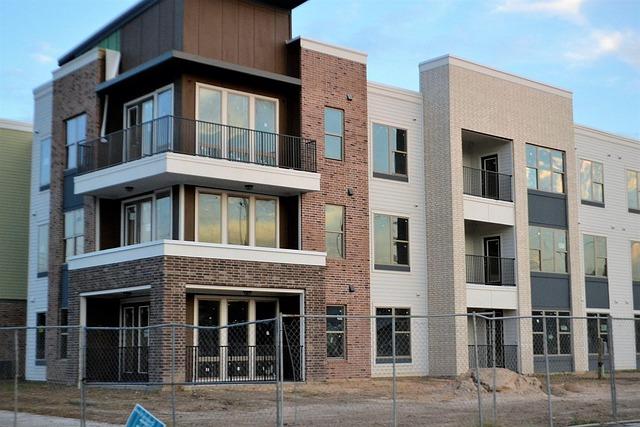When it comes to managing property, leaving a home or building vacant might seem like a harmless pause—whether you’re waiting to sell, renovating, or simply between tenants. However, what many property owners overlook is the serious risk involved in leaving their property uninsured during these periods. The hidden dangers of leaving property vacant without insurance extend far beyond simple financial loss. From unexpected damage and vandalism to legal liabilities and escalating repair costs, unprotected vacant properties can quickly become a costly nightmare. In this article, we’ll explore why insuring vacant properties is not just a precaution, but a critical necessity for safeguarding your investment and peace of mind.
Table of Contents
- Hidden Risks Property Owners Face When Leaving Homes Uninsured
- How Vandalism and Theft Escalate Property Damage Costs
- The Financial Impact of Liability Claims on Vacant Properties
- Essential Steps to Secure and Insure Unoccupied Real Estate
- Wrapping Up
Hidden Risks Property Owners Face When Leaving Homes Uninsured
When property owners decide to leave their homes uninsured during extended vacancies, they unknowingly expose themselves to a range of financial perils. Without proper coverage, any unexpected event such as fire, vandalism, or natural disasters can translate into out-of-pocket expenses that may soar beyond repair costs. Moreover, vacant homes often attract trespassers or squatters, increasing the risk of liability claims if injuries occur on the property. Most standard homeowner policies exclude coverage for unoccupied properties, leaving owners vulnerable to damages that insurance typically covers.
In addition to the immediate risks, the lack of insurance can create longer-term complications. Some such challenges include:
- Mortgage and loan complications: Lenders may require proof of insurance and the absence of it can lead to penalties or foreclosure risks.
- Decreased market value: Neglect can cause deterioration unnoticed, resulting in costly repairs or devaluation when the property is sold.
- Difficulty obtaining future coverage: Insurers might perceive a vacant, previously uninsured property as high-risk, leading to higher premiums or outright denial of coverage.
How Vandalism and Theft Escalate Property Damage Costs
When a property stands empty and uninsured, it becomes an inviting target for vandals and thieves. Their destructive actions often go beyond simple break-ins, leading to extensive harm that significantly inflates repair costs. Broken windows, damaged doors, and smashed fixtures are just the surface-level damage; vandals may also tamper with electrical wiring, plumbing, or appliances, causing hidden problems that require costly professional repairs. Additionally, the theft of valuable materials such as copper wiring or HVAC components not only adds the price of replacement but can also render the property uninhabitable until fully restored.
Key factors that contribute to escalating expenses include:
- Delayed discovery of damages, allowing secondary problems like mold or water intrusion to develop
- Increased insurance premiums or denial of claims due to negligence in securing vacant properties
- Costs related to security upgrades or temporary boarding up to prevent further incidents
- Potential legal liabilities if trespassers are injured on the property
Without proper insurance coverage and proactive security measures, what might have been manageable damages quickly spiral into overwhelming financial burdens for property owners.
The Financial Impact of Liability Claims on Vacant Properties
When a property sits vacant, it becomes an unmonitored liability that can quickly drain finances through unexpected claims. Without proper insurance coverage, owners often face the full brunt of legal fees, settlements, and medical expenses resulting from injuries or accidents on the premises. These costs aren’t just inconvenient—they can be financially devastating, potentially exceeding the property’s value and leading to significant out-of-pocket losses. The lack of daily oversight increases the chances of unnoticed hazards, such as unsafe stairs, broken glass, or slippery floors, which can all become grounds for legal action.
Common financial repercussions include:
- High legal defense costs, even when claims are disputed.
- Settlement or judgment payments that can bankrupt individual property owners.
- Increased insurance premiums once a claim has been filed.
- Extended loss of rental income while legal matters are resolved.
- Potential lien placements if claims are not promptly addressed.
Protecting vacant properties with specialized liability insurance is essential to mitigate these risks. This foresight not only shields your finances but also provides peace of mind in an unpredictable landscape.
Essential Steps to Secure and Insure Unoccupied Real Estate
When leaving a property vacant, the risk of damage rises dramatically due to inactivity and lack of oversight. It’s crucial to implement physical security measures to deter vandalism and unauthorized access. Consider installing robust locks, security cameras, and motion-activated lights. Regular property inspections help identify potential hazards early, preventing costly repairs. Additionally, maintaining the landscape can give the appearance of an occupied, cared-for home, which often discourages trespassers. Without these precautions, the likelihood of theft, water damage, or unnoticed structural issues increases significantly.
Insurance tailored specifically for unoccupied properties provides a vital safety net against unforeseen losses. Standard homeowner policies often exclude vacancy, leaving owners vulnerable. Specialized vacancy insurance covers risks such as fire, liability, and even certain types of weather damage during periods when the property is not in use. Be sure to inform your insurer about the vacancy status and duration to avoid claim denials. Effective coverage plans typically include:
- Theft and vandalism protection even without daily occupancy
- Liability coverage in case of injury on the premises
- Additional perils linked to neglect or maintenance lapses
Wrapping Up
In today’s unpredictable world, leaving property vacant without insurance is a risk far too great to overlook. From vandalism and theft to natural disasters and liability issues, the hidden dangers can quickly turn what seems like a minor oversight into a costly nightmare. Protecting your investment goes beyond simply securing the physical premises—it requires having the right coverage in place to shield you from financial loss when the unexpected strikes. Don’t wait until it’s too late; evaluate your property’s insurance needs today and ensure that your vacant property doesn’t become a hidden liability tomorrow.






